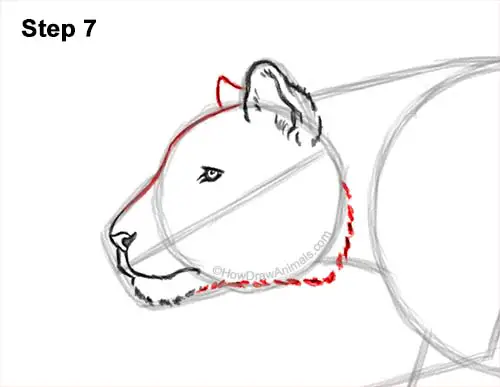
Step 7: Darken the outer edges of the guides to create the rest of the tiger's head. At the top, draw a small curved line for the other ear. Use short strokes along the bottom o create a furry texture. Extend the shape of the head farther to the right than the initial head circle.
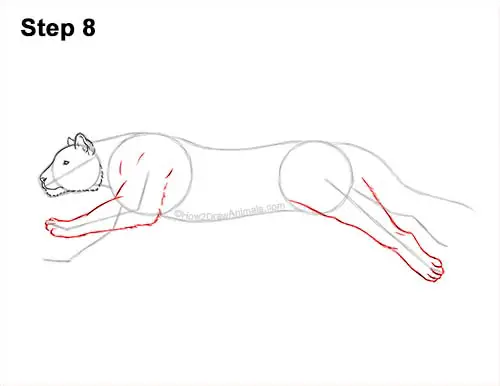
Step 8: Use the long, angled line that's under the head as a guide to draw the tiger's front leg. Draw the shape of the leg around the guide line. The top of the leg should be wide and then it should gradually get narrower toward the foot. Curve the lines to indicate the muscle structure. On the tip of the foot, draw a few curved lines for the toes. Sketch lightly at first and only darken the lines when you get the shape right. Use the diagonal line on the left as a guide to draw the hind leg the same way. Draw the leg around the guide line and add the toes at the bottom.
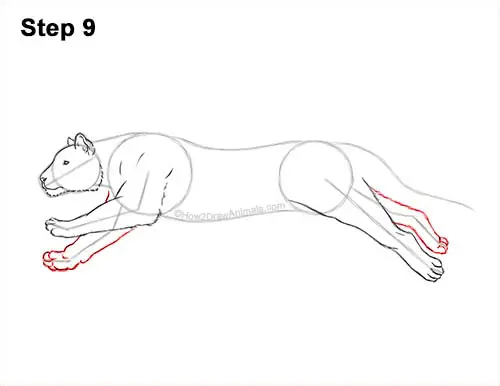
Step 9: Use the other angled lines under the body as guides to draw the tiger's other set of legs. Draw the shapes of the legs around the guide lines. The tops of these legs will be hidden behind the first set of legs, so only draw the visible sections. Add a few curved lines along the edges of the feet for the toes.
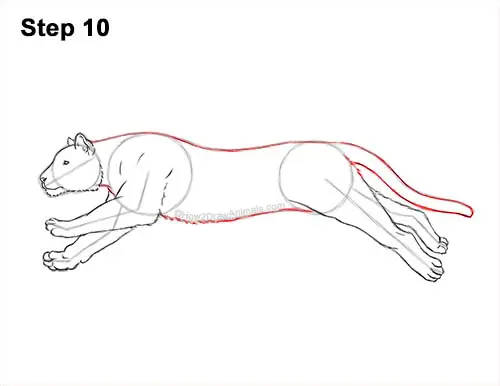
Step 10: Darken the outer edges of the remaining guide lines to create the shape of the tiger's body. Use short strokes along the underside of the body for a furry texture. Darken the line on the right for the tail. Make the tail wider by drawing another wavy lines below the original tail guide.
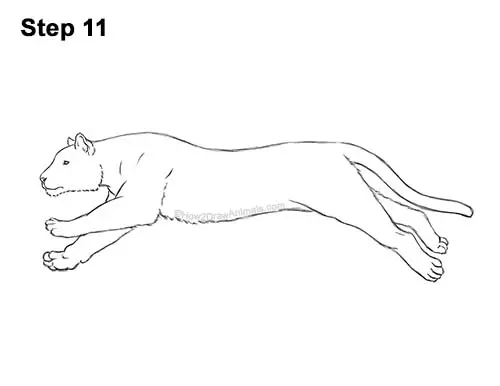
Step 11: For a cleaner look, erase as much as you can of the initial guide lines. Don't worry about erasing all of the guides. It's okay to leave some behind. Re-draw any final sketch lines you may have accidentally erased.
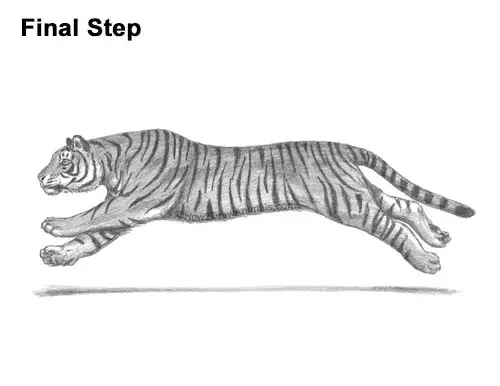
Final Step: Add the distinctive striped pattern all over the body using a dark value. Draw each stripe as a thin, pointy shape and shade it in. Use short stripes on the head and longer stripes along the body. Curve the stripes to conform to the shape of the head. Tigers can have a variety of stripes, so you can draw yours differently if you'd like. After you add the stripes, shade the rest of the body using a light value. Don't shade the area around the eye or under the head and body for the white fur. Add a medium value throughout the body to create shadows. Pick a light source as you shade so that the shadows are consistent across the body. Here the light source is coming from the top so most of the shadows will be on the underside of the shapes. Shade lightly at first and gradually build up to darker values. For light values, push down very lightly on your pencil and push down harder for darker values. Add a cast shadow at the bottom using a medium value. It's a good idea to use reference as you shade for a more accurate depiction of a tiger. Shading can be time-consuming, so be patient and take breaks. For a more detailed guide on how to shade, check out this tutorial: How to shade.
Thanks for visiting! Subscribe to the How2DrawAnimals YouTube Channel for a new tutorial every week.
To learn how to draw popular cartoon characters, visit EasyDrawingTutorials.com.
To learn how to draw Manga, visit How2DrawManga.com.
RELATED TUTORIALS
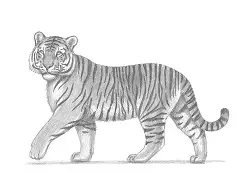 |
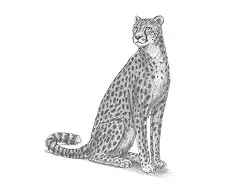 |
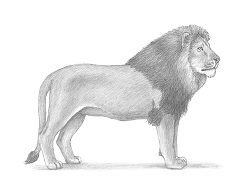 |







